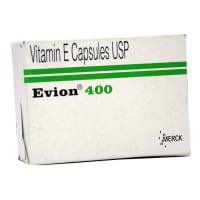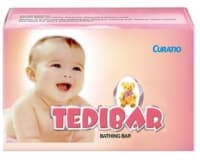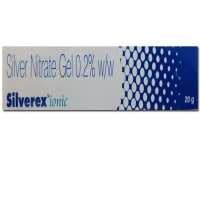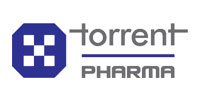
USED FOR:
Atopic dermatitis
COMPOSITION:
Pimecrolimus (topical) (1% w/w)

No interaction found

There is no data available. Please consult doctor before consuming the drug.

Pacroma 1% Cream is probably safe to use during lactation. Limited human data suggests that the drug does not represent a significant risk to the baby.

SAFE
Pacroma 1% Cream does not usually affect your ability to drive.

Pacroma 1% Cream is probably safe to use in patients with kidney disease. Limited data available suggests that dose adjustment of Pacroma 1% Cream may not be needed in these patients. Please consult your doctor.

Pacroma 1% Cream is probably safe to use in patients with liver disease. Limited data available suggests that dose adjustment of Pacroma 1% Cream may not be needed in these patients. Please consult your doctor.
Uses of Pacroma Cream
Pacroma 1% Cream is used in the treatment of atopic dermatitisIt is usually used only after topical corticosteroids or emollients have not worked for you.
How to use Pacroma Cream
This medicine is for external use only. Use it in the dose and duration as advised by your doctor. Check the label for directions before use. Clean and dry the affected area and apply the cream. Wash your hands after applying, unless hands are the affected area.
How Pacroma Cream works
Pacroma 1% Cream is an immunosuppressant that works by decreasing inflammation
in the skin which causes redness and itching of the skin.
Common Application site reactions (burning, irritation, itching and redness), Skin infection.
Expert advice for Pacroma Cream
Wash your hands before applying Pacroma. Apply a thin layer to the areas of skin affected by atopic dermatitis (eczema). Make sure your skin affected by atopic dermatitis (eczema) is completely dry especially after bath or shower. Limit sun exposure during treatment even when the medicine is not applied on the skin. Do not cover the skin being treated with bandages or dressings. You can wear normal clothing. Avoid getting Pacroma in the eyes or mouth. If the Pacroma gets on any of these areas, it should be thoroughly wiped off and/or rinsed off with water. Stop Pacroma when the signs and symptoms of atopic dermatitis (eczema) such as itching, rash, and redness go away or consult your doctor. Not recommended to be used for more than 6 weeks and if needed, treatment may be repeated with breaks in-between. Can’t be used if your immune system is weak (for example, if you have cancer or are taking steroids for a long time). Inform your doctor if you have any infection on your skin including chicken pox or herpes. Inform your doctor if you are pregnant or planning to conceive or breastfeeding. Many people see an improvement in their skin in as early as one week. Not recommended in children aged below 2 years.
Q. Is Pacroma a steroid?
No. Pacroma is not a steroid. It is an immunosuppressant, used in the treatment of atopic dermatitis (eczema).
Q. Is Pacroma used in vitiligo?
No. Pacroma is not approved for used in vitiligo. It is an immunosuppressant, used in the treatment of atopic dermatitis (eczema).
Q. Which is more effective, Pacroma or tacrolimus?
Tacrolimus ointment is more effective, with a similar side effect compared with Pacroma in patients with atopic dermatitis.
Q. Which is more effective, Pacroma vs hydrocortisone topical?
Pacroma is more effective, with a less side effect compared with hydrocortisone in patients with atopic dermatitis. Pacroma can be applied to face and neck where prolonged intermittent treatment whereas hydrocortisone (topical corticosteroids) may be inappropriate.
Q. Which is more effective in atopic dermatitis, Tacrolimus or Pacroma?
Tacrolimus ointment is more effective, with a similar side effect compared with Pacroma in patients with atopic dermatitis.
Q. What are alternatives to Pacroma cream?
Tacrolimus topical or steroid topicals i.e. hydrocortisone, betamethasone, clobetasol can be used as an alternative to Pacroma.
Q. Is Pacroma used for perioral dermatitis?
No. Pacroma is not approved for the treatment of perioral dermatitis. It is an immunosuppressant, used in the treatment of atopic dermatitis (eczema).
Q. Is Pacroma used for rosacea?
No. Pacroma is not approved for the treatment of rosacea. It is an immunosuppressant, used in the treatment of atopic dermatitis (eczema).
Q. Is Pacroma cream used for alopecia?
No. Pacroma is not approved for the treatment of alopecia. It is an immunosuppressant, used in the treatment of atopic dermatitis (eczema).
Q. Is Pacroma cream used for ringworm?
No. Pacroma is not approved for the treatment of ringworm infection. It is an immunosuppressant, used in the treatment of atopic dermatitis (eczema).
Q. Is Pacroma cream used for idiopathic guttate hypomelanosis?
No. Pacroma is not approved for the treatment of idiopathic guttate hypomelanosis. It is an immunosuppressant, used in the treatment of atopic dermatitis (eczema).
Q. Is Pacroma cream used for scabies?
No. Pacroma is not approved for the treatment of scabies. It is an immunosuppressant, used in the treatment of atopic dermatitis (eczema).
Q. Is Pacroma cream for acne?
No. Pacroma is not approved for the treatment of acne. It is an immunosuppressant, used in the treatment of atopic dermatitis (eczema).
Q. Is Pacroma cream used for pityriasis alba?
No. Pacroma is not approved for the treatment of pityriasis alba. It is an immunosuppressant, used in the treatment of atopic dermatitis (eczema).
Q. Is Pacroma cream used for psoriasis?
No. Pacroma is not approved for the treatment of psoriasis. It is an immunosuppressant, used in the treatment of atopic dermatitis (eczema).


 Pacroma 1% Cream
Pacroma 1% Cream  Bookmark
Bookmark





















